Where do I keep my food storage? Many of you are like me and don’t have a ton of space for long term food storage. Even though we live on a fifteen acre homestead, I actually have very little storage space. We don’t have a barn, we don’t have a garage, we don’t have a basement, nor do we have a crawl space or an attic.

Our home isn’t huge by any means. So if you’re like me, you might be thinking there’s no way you can store a few months worth of food, let alone up to six months or a year.
Natural Remedies Made Simple
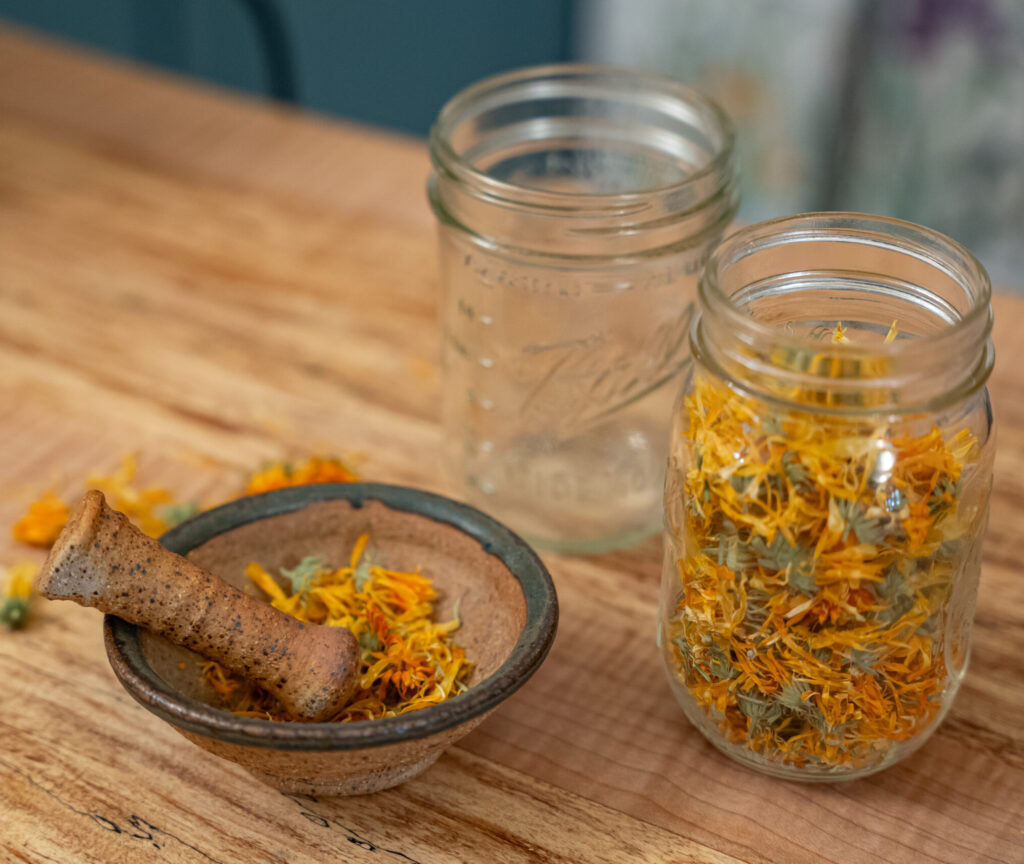
Start your home apothecary with confidence—even if you’re brand new. Learn how to choose the right herbs for your body using the simple principles of herbal energetics.
Discover how warming, cooling, drying, and moistening herbs affect your body—so you can stop guessing and start making remedies that actually work.
Let me assure you, it’s possible and with less space than you think.
The 2 most important things in choosing your food storage location
For the majority of our long term food storage and pantry, we converted a coat/broom closet into a walk in pantry. We used plain metal shelf brackets and sheets of plywood (we did a quick paint job with white pain) and installed shelving along the back and sides of the closet. I still hang my broom and mop on the wall, and we put a hanger that goes over top of the door to hang our coats from.
1. Our coat closet turned food storage pantry is at the farthest end of the house from our wood stove and is against an exterior wall. Food will store and last much longer when kept cool.
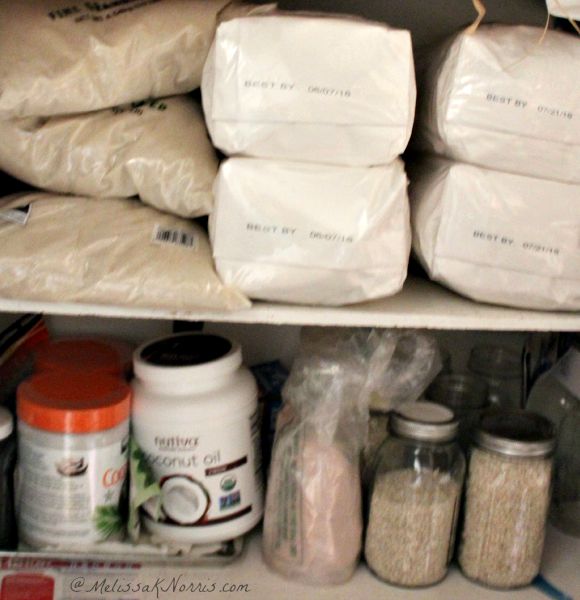
2. No windows. Light will degrade your food and significantly shorten its shelf life.
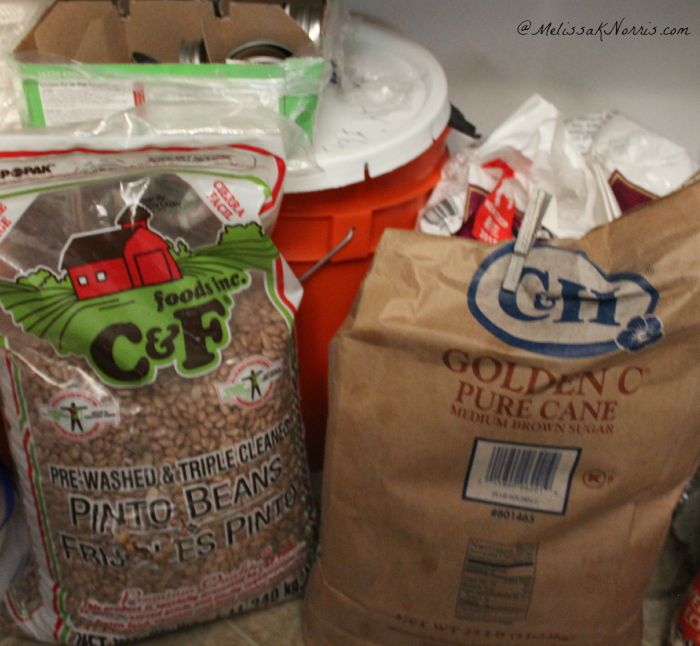
I store the majority of our bulk food in the closet pantry. You can see in the photo the 30 pounds of organic evaporated cane juice (our sugar source) and 40 pounds of organic unbleached all-purpose flour fits on one shelf. Anything that has an expiration date on it, I stack with the expiration date facing outwards. We used pretty good bracing as you can imagine. My coconut oil sits beneath that with some of our salt and buckwheat.
The floor houses our dried beans, rice, and 50 pound bags of wheat berries. Normally, I store our 25 pound of brown sugar in a plastic 5 gallon bucket with lid, but my bucket got swiped for another use on the homestead and I have to replace it.
The other majority of space is for all of my home canned goods. I’m still canning as the garden is producing, so it’s not quite full yet.
You can tell by looking at the photos, probably two thirds of our bulk and home food storage comes from our home canned goods. From those home canned goods, we grow almost all of it ourselves, making it virtually free. Even if you don’t grow it, preserving it yourself is both frugal and a step towards self-sufficiency. I’ve got a complete FREE Ultimate Home Food Preservation Guide just for you!
How to Re-Package Bulk Food for Food Storage
I repackage a lot of our bulk food storage into glass containers and keep them directly in the kitchen. I prefer glass as it’s much harder for pests to get through it or for it to rip, like said plastic bags. Plus, I’m a sucker for anything in a Mason jar and consider it part of my decor.
Labeling is important, as you might think you’ll remember when you canned it, or which type of wheat it is, but trust me, you’re likely to forget a year from now. I’ll write with a permanent marker on old canning lids, but I adore these chalkboard labels for prettier use and it makes it easier when going at a glance then having to look at the top of each jar or container. I use them on my spice jars, different wheat berry varieties and just about anything else that stands still in the kitchen.
Small jelly jars work well for re-packaging herbs and spices.
Pint size jars for things like dill weed and chili powder, which I tend to use more of.
Quart size jars are what I use for my garlic and onion powder. I also keep popping corn and wheat berries in my quart sized jars. Wide mouth jars work best for re-packaging and a canning funnel works well if you’re pouring things from one container to another.
Half gallon jars work well for dried beans. I re-use my used canning lids on my dry good storage. Old peanut butter jar lids work well as well. You can grab a case of these for less than $15.
I adore the gallon size Ball jars with a rubber seal. Note: they’re not for canning, but they work very well for things like oatmeal, flour, and sugar. However, these gallon jars are half the price.
Keeping food in an air tight environment also helps with the shelf life. You can use the attachment on a vacuum sealer or check out this tutorial on using a non-electric Mason jar vacuum sealer.
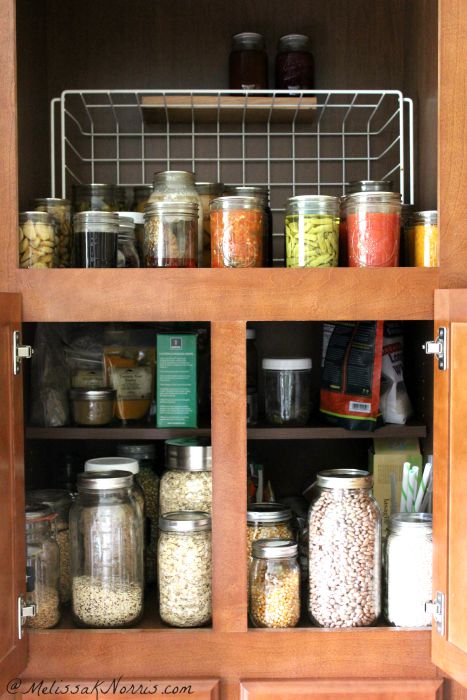
Here is my in the kitchen home food storage area. The top open shelf is home canned goods that need to be used first. I practice my rotation by placing the newly canned items in the back closet and bringing out the older stuff to the kitchen to make sure I don’t “loose” track of things.
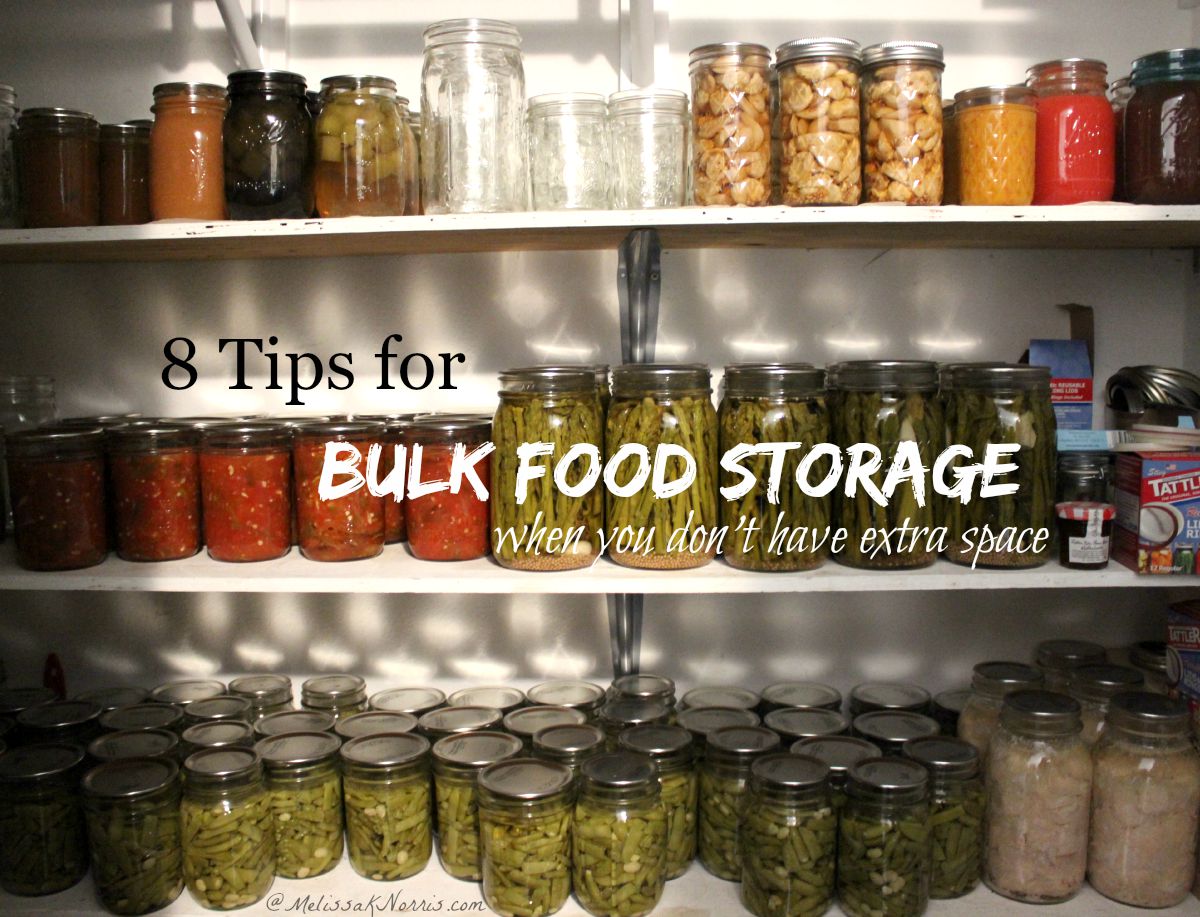
Need to get even more creative with your storage?
Subscribe to Melissa K. Norris!
Get updates on the latest posts and more from Melissa K. Norris straight to your inbox.
We use your personal data for interest-based advertising, as outlined in our Privacy Notice.
Creative Food Storage Ideas
Some folks will slide things in underneath their bed. Just make sure you keep notes of what you have and practice rotation. Another creative idea is from my friend Angela over at Food Storage and Survival and she shares how she stores food behind her couch.
Daisy has some great ideas for storage spots, plus grouping items together in her 6 OCD hacks for to organize stock piles.
The Magazine holder in this post is a great idea!
Love this post from Common Sense Homesteading, her shelf idea is great, not to mention the corner and small area ideas.
What creative spaces have you used for food storage?



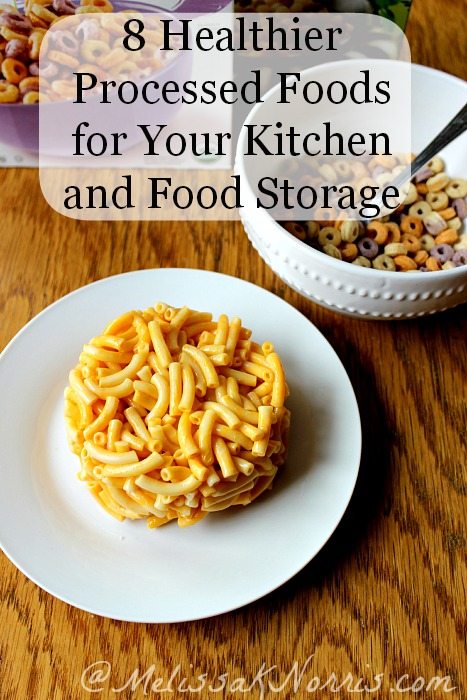

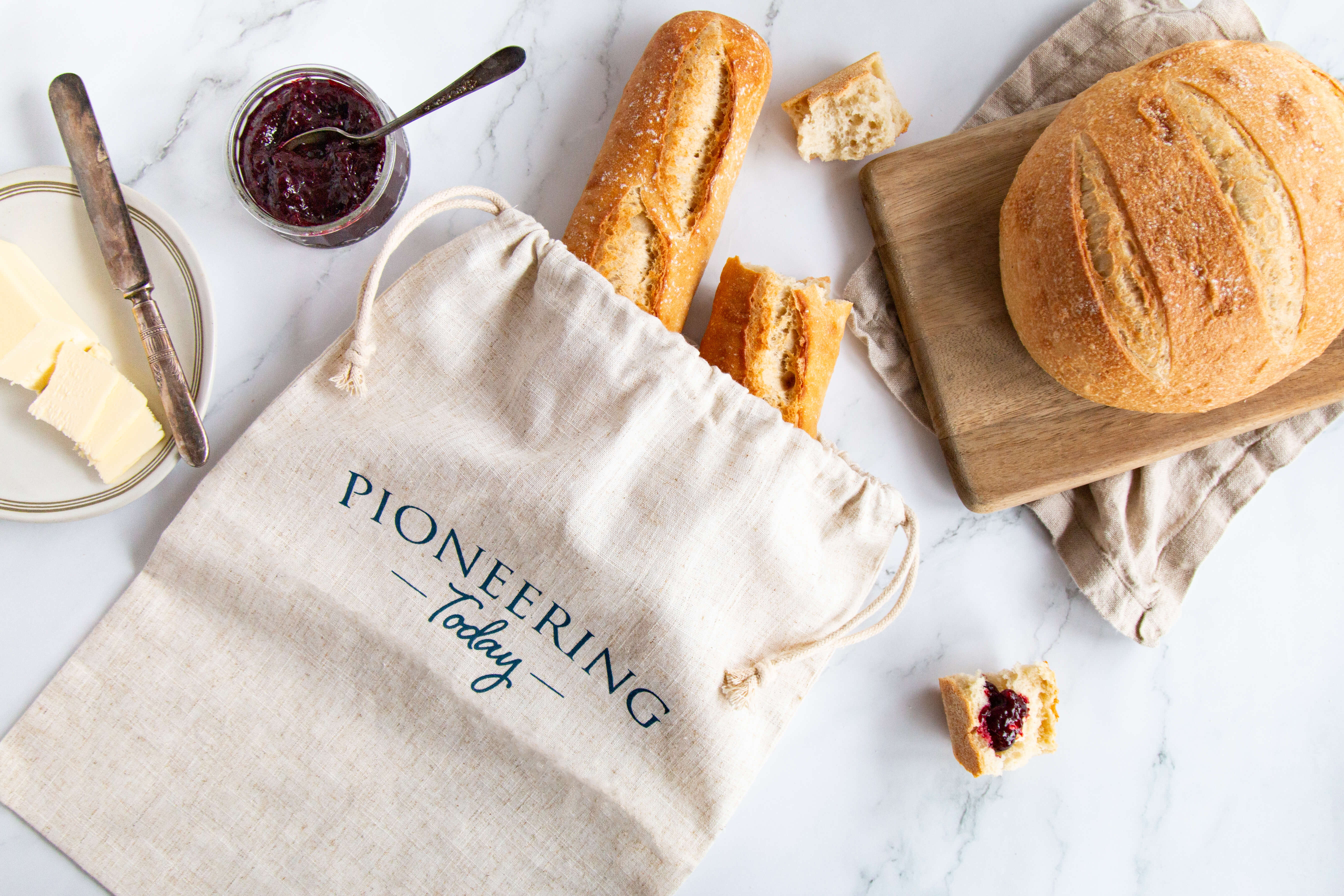






I’ve heard that insect eggs can hatch during dry storage and that there are ways to sterilize by freezing or by using the oven to kill them and then you dry can the dry goods. But the purpose is now that it is cooked food because it isn’t but that it’s just a way of preventing re-contamination of bugs and their larvae.
[…] source […]
[…] source […]
[…] Don’t go into debt to build up a food storage, but add in items as you’re able. We’ll be talking about how to store these items, and getting creative with storage space, in 8 Tips for Bulk Food Storage. […]
I used a food saver to seal alot of beans & rice along with lentils by chance doe’s anyone know how long this should last being vacuumed seal should last I placed them in 5 gallon buckets I bought from Zips drive in and cleaned properly thank you Cole
We are lucky enough to have a large basement/garage area to store food stuffs but have had a terrible time with rodents this last year (cats are just not doing their job anymore). We have started storing in the plastic 5 gallon buckets but since we didn’t have space to put 25 lbs of beans or rice in the freezer first to kill any critters that might develop it, we have started using a small chunk of dry ice in the bottom of the bucket to help preserve them. We wrap it in a piece of parchment paper, put it in the bottom and then pour the dried goods on top of it and put the lid on gently. We do need to “burp” it a couple of times as the dry ice “melts” and the CO2 is released. It is heavier than air so it pushes all the O2 out and any critter types die from lack of O2. Then we either push the lid down tightly so that the rubber ring locks down for long storage or just regular for more frequent use. I love glass too but find the larger containers, like gallon size too heavy and fragile for our use. Our local grocery store sells 1 lb blocks of dry ice for a few dollars and that will treat 10 or more 5 gallon buckets. Left over dry ice makes a great fog machine toy if you add a little water to it.
Penny, thanks so much for the tip!
Hi,
If you need buckets, go to local big box store bakery Dept. and
ask if they have any empty buckets you can have. They might give them
to you for FREE.
Hope that helps
Excellent tip, Mark!
Hey Melissa! I was wondering if you’ve ever grown your own oats for your family? I just purchased some oats (avena sativa) from baker’s creek, mainly for soil building over the fall/winter months because I only have terrible Alabama clay to work with, but have been thinking about collecting the grains for my family. I am a complete beginner at gardening so I was just curious at what your opinion is on this subject.
Chelsea,
I haven’t grown oats here in the Pacific Northwest. We’re usually a fairly wet and short growing season, so I don’t know if they’d grow here. Sorry I’m not more help there.
Because some things might already come with weevils in them from the store shelves it’s a good idea to put bay leaves in things like flour and baking mixes; especially cornmeal. Weevils are worse during our rainy season and I suppose because everything else was “protected” my pasta was attacked for the first time ever. I took that as a sign I was doing something right and the loss of one box of pasta didn’t break the bank but from now on it too goes into a glass storage container with bay leaves.
We are going to New Orleans in January and I’ve been told the bay leaf trees are prolific there and plan to haul as many leaves home as I can. TSA will wonder what was this woman thinking!
Laurie,
Thanks for the tip! Glass is my go to and now I”ll be on the lookout for a good deal on bay leaves. 🙂
Melissa,
I read this post and just wanted to pass on this information on
Tammy Ganloff.
Her Youtube videos are amazing. She is listed by, dehydrate2store. She shows how to dehydrate all kinds of frozen foods, which are already blanched, which saves time and energy, not to mention light weight and less costly than buying #10 cans of dehydrated goods. If we can plan for all the vegetables and fruits with this method, not only do we have more room, but more time to work on other things to go with this, like canned meats, etc. She was very insightful and I think her method and even some recipes are worth checking her out. She also has a chart on how to and what temperatures, to make all the fruits and vegetables turn out great. I know you are very busy, but you need to check her out. To me, this is a way to store food fast, and then I can work on my other projects that I have neglected. God Bless You, Sue
Thanks for sharing, Sue.
I haven’t heard of Tammy but I’m all for ways to preserve our own food. I’ll check it out!
I’m new to canning so this may be a silly question.. but I was noticing in your pictures of all the different canned goodies, some have the bands screwed on and some don’t. Will they stay sealed properly? Why do some have them and some not?
Chelsea,
Truth, my husband put those jars up, the pickled garlic are his favorite and didn’t remove them, and I didn’t catch it. They will stay sealed, but if there’s any moisture, the bands will rust, and that makes them not screw down as easily or tightly when canning. So, normally, I take the bands off. Second thing, is if your seal fails while on the shelf, you’ll notice it much faster without the band on. Hope that helps!
I also live in a little house with not a lot of storage (crawl space basement area not ideal for food!), so I converted a coat closet into our everyday pantry and a linen closet into another pantry. I also use every other no traditional space I can! Great post thank you!
Marcie,
Those closets are gold, right? Nice job!
Thanks for the mention and link. We’re busy as can be right now, canning, freezing and dehydrating everything that’s ripening.
Laurie,
You’re so welcome! I hear you, just did the possibly last run of green beans as I’m letting the rest ripen on the vine for shellies and seed. Tomatoes are demanding more salsa making. Happy harvest time.
Loving your series this month and the new “face” on your website 🙂
You mentioned storing brown sugar – quick tip – store gallon jugs of molasses and white sugar instead of brown sugar (that seems to go hard too quickly anyway!). Just add some molasses to the white sugar to make brown sugar. Cheaper that way too! A gallon of molasses at the bulk food stores/co-ops goes for $9.
Thank you for all of your work!!
Anne,
Love this tip, another reader mentioned it and it seems I’ve been missing out. Next trip to my co-op and I’m grabbing me a big old jug of molasses. Thank you!